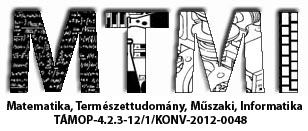Reversible oxidative contractile dysfunction in isolated human cardiomyocytes
Abstract data
Purpose: Myeloperoxidase (MPO) contributes to the generation of several oxidants, such as hypochlorous acid from chloride ions and hydrogen peroxide (H2O2) during ishaemia-reperfusion and myocardial inflammation. We aimed to characterize the functional and structural effects of MPO and of its inhibitor (4-aminobenzhydrazide) on left ventricular (LV) human cardiomyocytes.
Methods: Force measurements were performed on isolated, permeabilized human cadiomyocytes isolated from LV myocardium. Active force (Factive), passive force (Fpassive) and calcium sensitivity of force production (pCa50) were determined before and after the applications of H2O2, MPO and the MPO inhibitor at a sarcomere length of 2.3 µm.
Results: Application of H2O2 (30 µM for 15 min) decreased Factive (from 20.5±2.7 kN/m2 to 14.0±1.7 kN/m2, p<0.01, n=6) and slightly increased Fpassive (from 2.4±0.5 kN/m2 to 2.9±0.4 kN/m2, n=6). Further reduction in Factive (from 19.1±2.7 kN/m2 to 10.6±1.8 kN/m2, n=12, p<0.01) and a significant increase in Fpassive (from 1.5±0.1 kN/m2 to 2.6±0.3 kN/m2, n=12, p<0.01) was observed when H2O2 and MPO (2.67 nM) were applied together. In the presence of the MPO inhibitor (50 µM) the decrease in Factive and the increase in Fpassive were similar to the values measured after H2O2 treatment (from 16.3±3.4 kN/m2 to 11,1±1.6 kN/m2, p<0.05 and from 1.8±0.4 kN/m2 to 2.3±0.5 kN/m2, respectively, n=5). H2O2 alone did not affect pCa50, however, combined application of H2O2 and MPO reduced pCa50 (from 5.85±0.03 to 5.69±0.02, n=12, p<0.01). MPO inhibitor prevented the decrease in pCa50 evoked by H2O2 and MPO (pCa50=5.84±0.03 vs. 5.87±0.07, n=5).
Conclusions: Oxidants generated by the MPO in ischaemia-reperfusion injury and inflammation impair the contractile system of cardiomyocytes. MPO decreases the active force and the calcium sensitivity and increases the passive force. These changes may contribute to the myocardial contractile dysfunction in ischaemia reperfusion injury.
Támogatók: Támogatók: Az NTP-TDK-14-0007 számú, A Debreceni Egyetem ÁOK TDK tevékenység népszerűsítése helyi konferencia keretében, az NTP-TDK-14-0006 számú, A Debreceni Egyetem Népegészségügyi Karán folyó Tudományos Diákköri kutatások támogatása, NTP-HHTDK-15-0011-es A Debreceni Egyetem ÁOK TDK tevékenység népszerűsítése 2016. évi helyi konferencia keretében, valamint a NTP-HHTDK-15-0057-es számú, A Debreceni Egyetem Népegészségügyi Karán folyó Tudományos Diákköri kutatások támogatása című pályázatokhoz kapcsolódóan az Emberi Erőforrás Támogatáskezelő, az Emberi Erőforrások Minisztériuma, az Oktatáskutató és Fejlesztő Intézet és a Nemzeti Tehetség Program



